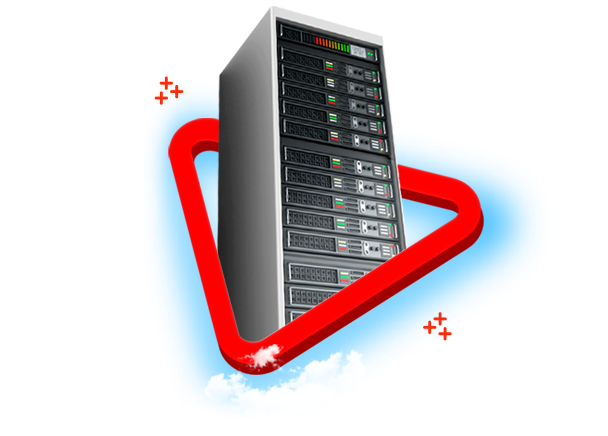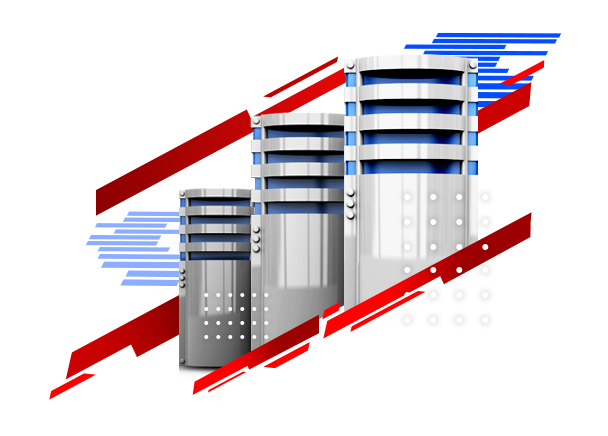
It does not matter how secure your computer or server is, but hardware problems, software errors and inaccessibility of data, data theft and intrusion into the server and even natural disasters such as fire or power outages may fluctuate the data center. You will not be harmed. In this case, restoring important and vital information of the website is practically impossible.
How Do Online Backup Services Work?
Table of Contents
If your website is a product sales channel where you store sensitive information or transfer this information to your website server, online backups at regular intervals are a practical and safe way to avoid problems such as data loss.
There are many benefits to using online backup services. Here are some of them:
More security
In terms of cybersecurity, most online backup services have dedicated teams of IT security experts who are constantly working to improve the security of automated services.
More precisely, the probability of data loss due to natural causes such as fire or earthquake or power fluctuations if using online backup services is practically zero.
Being self-sufficient
Online backup services are fully automated and require only initial configuration. After configuration, backup operations are performed without the need for login or monitoring.
Sync multiple devices
Offline backup methods Using software do not allow you to back up multiple devices at the same time. In contrast, online backup is able to back up the required files from many devices and databases simultaneously.
What is a jet backup?
JetBackup is an online backup plugin for cPanel that lets you make backup copies of your cPanel account, website, files and folders via cPanel Remote. Jet backup capabilities include full backup of accounts, files, emails, DNS, cronjobs, databases and SSLs.
Jet Backup also allows you to create various filters when backing up to place or delete accounts based on disk space, cPanel packages, etc. in the backup process. All of these features are readily available in a user-friendly graphical user interface.
JetBackup is also provided as standalone software and allows you to back up servers; But it is more common to use the plugin in C Panel.
If you want to create or download a full backup of your account, you must do so through Panel -> Files -> Backup. Jet backup has a number of special features that we will mention in the following.
Jet backup features
Multiple scheduling
Multiple scheduling allows you to set multiple schedules for backups using jet backups. In addition to the regular backups provided by your hosting, you can also use this feature to schedule a backup copy after any changes to the website.
Account filters
One of the features of Jet Backup is filtering accounts during backup. There are also other filters for selecting file types, settings, etc. that you can use to reduce the size of backup files.
GDPR mode
Jet Backup uses its own encryption algorithm when performing backups. End users can choose to have their encryption keys stored locally on the server or remotely stored in the space of their choice. The end user can also choose to have the backup information automatically deleted after deleting the account.
Combined backup
With the help of jet backup, you can select any combination of sections of an account for backup. General or unnecessary files can be removed from the backup process. You can also select specific directory paths.
Full Account BackUp
One of the useful applications of Jet Backup is the possibility of creating a complete backup of the account, which is slightly different from the backup version that C-Panel itself creates. The version produced by Jet Backup requires a series of settings to open in the C-Panel environment. You will also need the Jet Backup plugin to open this file.
This method of backup has an important risk, which is that it may change the IP addresses of the account; Therefore, it is recommended that you use your C-Panel backup to get the full version.
Backing up files
Jet Backup allows you to create any file or folder you want as a backup copy. It is also possible to restore any file or folder with the help of jet backup. With the help of this feature in Sipanel, the user account can be restored to the previous time and then the files and database can be easily restored.
Database backup
Another option in Jet Backup is to make a backup copy of the database. This feature allows you to view a list of your databases as well as the date of their backup and restore whichever you want.

What are the benefits of jet backup?
It syncs with cPanel and its user interface is easy.
Optional backup is possible, ie only data that has changed in the latest backup will be copied, thus speeding up the backup or recovery.
Ability to back up DNS, CronJob, SSLs, files and emails.
Ability to schedule backups.
Ability to load backups on PC like many databases in Sipanel.
The backup process is done automatically.
Ability to make copies of each CMS
Supported by CloudLinux.
Scheduled backup allows you to select the start and end time of the backup process.
It has a ranking system that can back up files or databases by priority.
Create various backup products and hosting accounts for your customers thanks to the WHMCS module.
Jet Backup allows you to save backups to multiple destinations, such as: Dropbox, Amazon S3, etc.
How does jet backup work?
Inside the C panel, there is a backup control panel. After entering the control panel, you will see different icons in which you can find 8 different sections:
Log in to JetBackup: Copy all data.
File backup: Copy folders and files.
Cron Job Backups: Copy of cron jobs.
DNS backup: Copy of DNS records.
Database backup: MySQL copies.
Email Backup: Copies of domain emails.
Backing up SSLs: Copy of SSL certificates.
Queue: Arrange backup processes that are running or have already been run.
After entering the JetBackup option, you can use its various capabilities. Here are some of the features of Jet Backup.
C Panel Recovery using Jet Backup
Follow the steps below to fully restore C-Panel backup with the help of Jet Backup:
Log in to C Panel using your username and password.
Go to Files → JetBackup.
To view available full backups, go to Restore & Download → Full Backup.
In this section you can see the complete backups created from the cPanel account. Additionally, you can view the schedules, the destination of the backup file, and the settings of the generated backups.
To restore, select Select Backup from the list and click on Restore.
Next, in Restore Summary, you will be asked to select or deselect items, then click Restore Selected Items.
Recovery will now begin, and you can monitor the backup process from Jetbackup → Queue. After the recovery is complete, you can see the Complete message in the Status section.
Website retrieval using jet backup
To completely restore websites like Moodle, PrestaShop, Joomla or WordPress using Jet Backup, you need to do 2 steps:
Retrieve the folder that contains cms or the public_html folder. For example, if you have a WordPress site, you only need to retrieve the related subdirectory (ie public_html / directory)
Second, recover the database. After recovering the folder containing cms, the database will be restored.
Recover a file or folder using Jet Backup
With the help of jet backup, different folders or files can be downloaded from the backup version or retrieved on the website. To do this, follow the steps below.
Enter the File Backups option.
Find the date whose files or folders you want to recover.
Select the relevant file management link.
A tree list from the directory is then displayed for you. Then select the public_html folder and click the Download Selected button to start the folder download, or click “Restore Selected” to restore the folders and files in that folder to their previous location on the server. After selecting the desired option, a process progress counter is activated in the right column for one second to indicate the end of the process.
Pluralization
Jet Backup is an application plugin in C Panel that gives you many features. With the help of this plugin, you can schedule the backup process, select files or folders, backup databases, complete backup of C-panel account, retrieve various sites, including WordPress sites, apply different filters for backup, etc. Is.
CATEGORY:Blog











